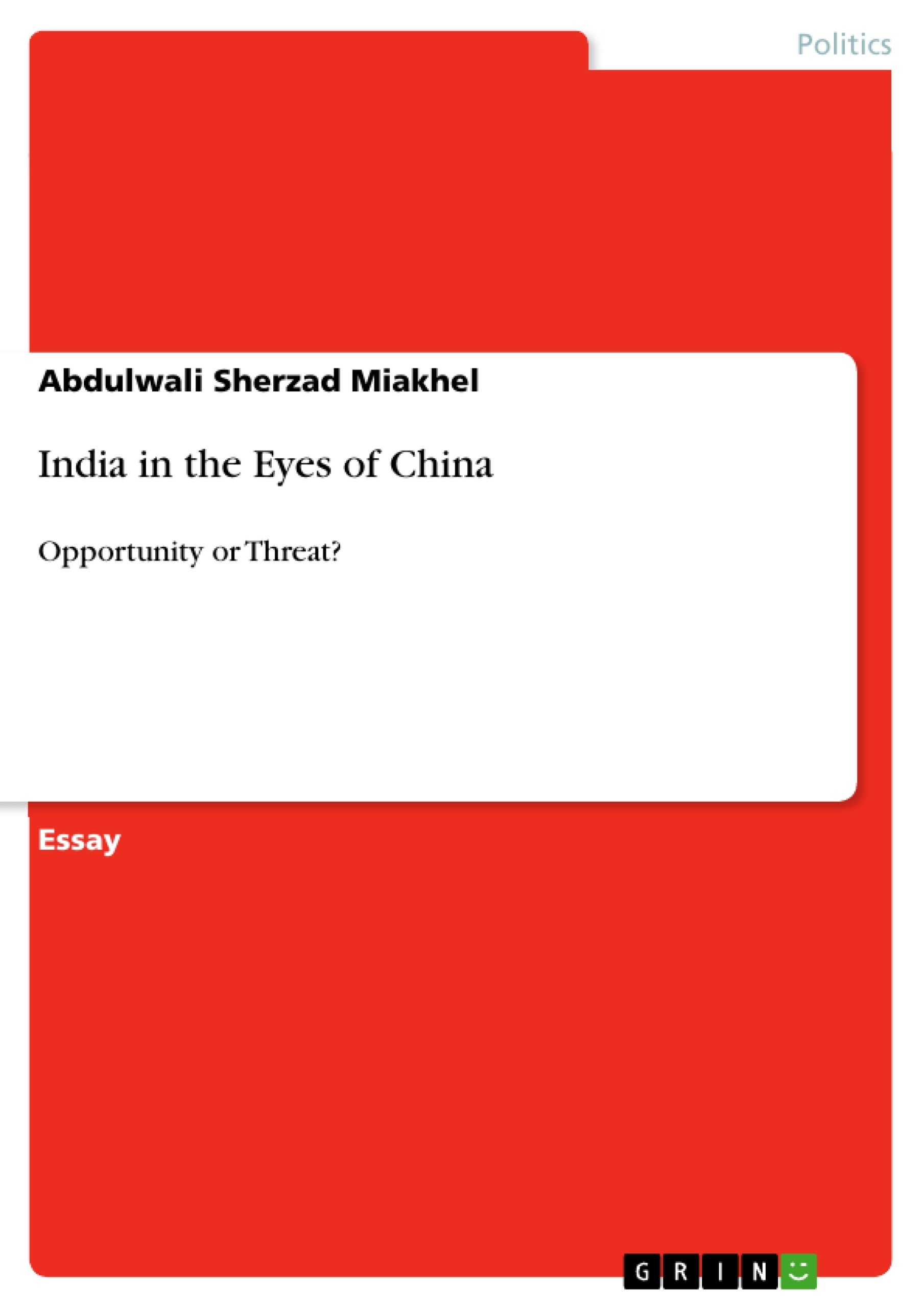[...] India is geopolitically important for China from two critical and many imperative
reasons. First Chinese leaders want to maintain economic growth to do so they need a stable
domestic environment and peaceful borders. Secondly Chinese leaders do not want the
United States to use India to contain China both militarily and economically. China and India
fought a war on disputed territories in Ladakh area in 1962. India lost the war with great
embarrassment due to weak and unskilled military, but now both China and India have a
strong military equipped with both conventional and nuclear weapons. Priorities in both
China and India have changed. Border disputes between the two countries are no longer top
priority. Both China and India want to put border disputes aside and work for better bilateral
relation.
India is economically important to China for many reasons first, they want to improve
bilateral trade with India. Secondly, they realized that international competition is no longer
entirely military. It is also to grow economically, scientifically and technologically.
Therefore, they want to cooperate with India both at regional and the global levels to become
a world power. Chinese leadership wants to change the current unilateral international system
to a more balance multi-polar international system in which they want an important role.
Other reasons India is important are its rising economic growth, a potential future market for Chinese goods and services, a good source of raw materials for China’s future demand and a
possible strategic partner in a more economically balance multilateral international system.
Inhaltsverzeichnis (Table of Contents)
- Introduction
- Geopolitical Importance of India for China
- Economic Importance of India for China
- Conclusion
Zielsetzung und Themenschwerpunkte (Objectives and Key Themes)
This work explores the evolving relationship between China and India, analyzing whether India represents an opportunity or threat for China. The author examines the geopolitical and economic significance of India for China, considering both cooperative and conflictive perspectives.
- China's strategic goals and its approach to India
- Geopolitical importance of India for China, including border disputes and regional stability
- Economic interdependence between China and India
- The role of the United States in China-India relations
- Confidence-building measures and efforts towards cooperation
Zusammenfassung der Kapitel (Chapter Summaries)
The Introduction outlines China's perception of India as a potential partner for economic growth and a key player in the global order. The chapter emphasizes the importance of a stable and cooperative relationship for China's national interests.
The section on Geopolitical Importance of India for China delves into the strategic significance of India's location and its impact on China's domestic stability and international standing. It highlights the historical context of border disputes and the need for peaceful relations.
Economic Importance of India for China examines the potential for economic cooperation, including increased trade and investment. It explores the benefits of a stronger economic partnership for both countries, including access to markets and resources.
Schlüsselwörter (Keywords)
The central themes of this work revolve around China-India relations, strategic partnerships, economic interdependence, geopolitical importance, border disputes, confidence-building measures, and regional stability. The analysis also considers the role of the United States in the complex relationship between China and India.
- Arbeit zitieren
- Abdulwali Sherzad Miakhel (Autor:in), 2009, India in the Eyes of China, München, GRIN Verlag, https://www.grin.com/document/128989



